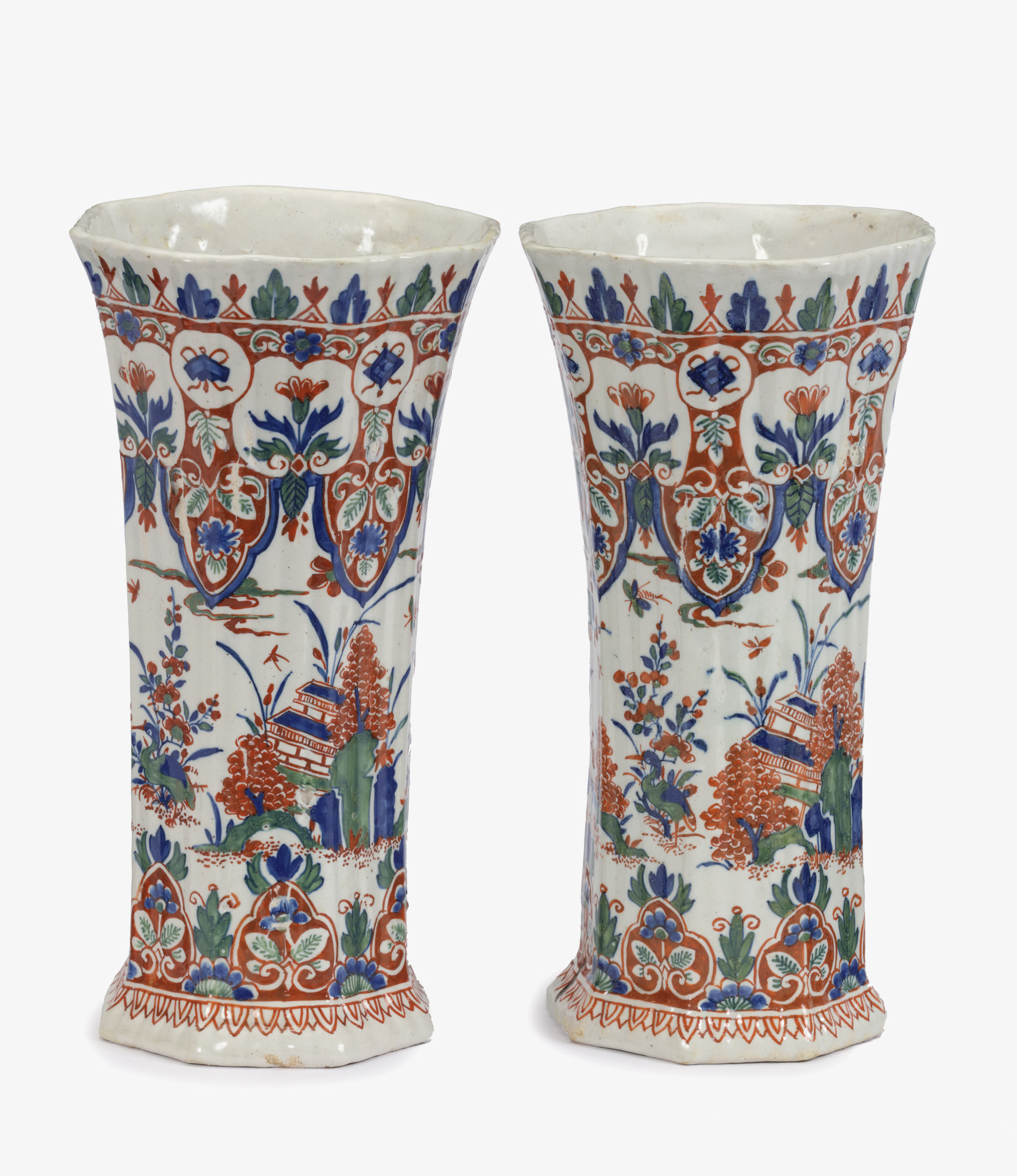![]()
Images on this website are licensed under a
Creative Commons Attribution-NoDerivs 3.0 Unported License.
OBJECT
•D2419. Pair of Cashmere Palette Beaker Vases
Delft, circa 1710
The body of the vases painted in blue, green and iron-red with birds perched in front of the branches of a profusion of flowering plants with a small bridge with a chinoiserie figure, and a pagoda behind plants, repeated on the reverse but without the bridge and the figure, on the upper part of the vases a ruyi-head with floral scrollwork and a dental band on the foot of the vases.
DIMENSIONS
Height: 20.7 cm. (8.2 in.)
PROVENANCE
Descendants of Anton F. Philips (1874-1951), Eindhoven, and thence by family descent
NOTE
The vibrant color palette on these elegant vases is known as ‘cashmere,’ a nod to both their color likeness and the elaborate, exotic motifs reminiscent of the fine woolen shawls imported from India and donned by esteemed European ladies. In this category of earthenware, the surface is adorned with a reeded texture, showcasing a harmonious blend of blue, red, and green hues, occasionally enriched with dashes of yellow or manganese. Despite their association with fashionable textiles, the inspiration for these Delft pieces traces back to Chinese famille verte porcelain wares of the Kangxi period (1662- 1722), which made their way to Europe in the late seventeenth century. Delftware painters, seeking diverse influences, also turned to the French baroque style prominent during the reign of King Louis XIV.
The French baroque style is characterized by a delicate interplay of arabesques and whimsical grotesques, rooted in the Renaissance. It also featured a fusion of foliage with human and animal forms, foreshadowing the Rococo movement. Furthermore, the composition was enriched with multiple garlands of flowers, draperies, scrolls, and pendants meticulously arranged to form magnificent embroidered motifs. While the production of these elaborate pieces was likely costly, the cashmere palette experienced a brief yet widespread success in the first half of the eighteenth century.









